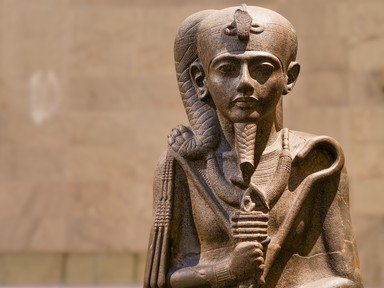Quiz Answer Key and Fun Facts
1. The God of the Dead, responsible for mummification and burial rites.
2. God of the Sun, and creator of all life.
3. A Goddess of Love who represented the arts.
4. Considered the God of the Underworld (and the afterlife) and, by extension, a deity of rebirth and fertility.
5. The Feline Goddess and the protector of the home.
6. The Moon Goddess and a deity of life and healing.
7. God of the Sky who could transform into a hawk.
8. Committed fratricide and became the God of the Desert.
9. The God of the Moon, he was a champion of writing, hieroglyphs, and language.
10. Before merging with another, he was the God of Air.
Source: Author
kyleisalive
This quiz was reviewed by FunTrivia editor
WesleyCrusher before going online.
Any errors found in FunTrivia content are routinely corrected through our feedback system.
